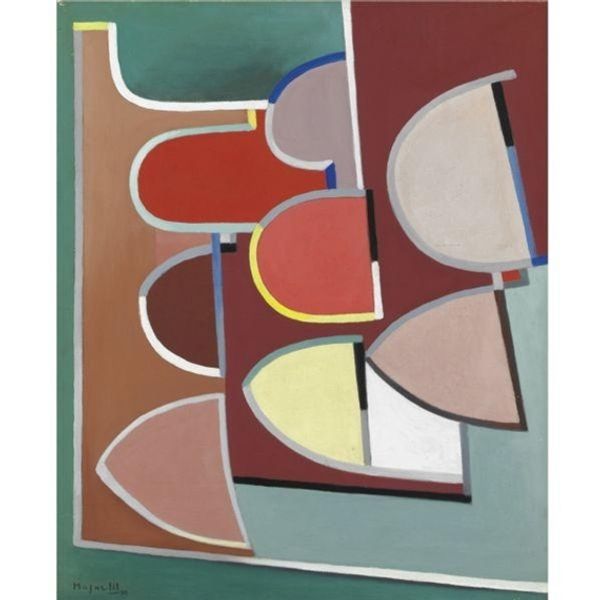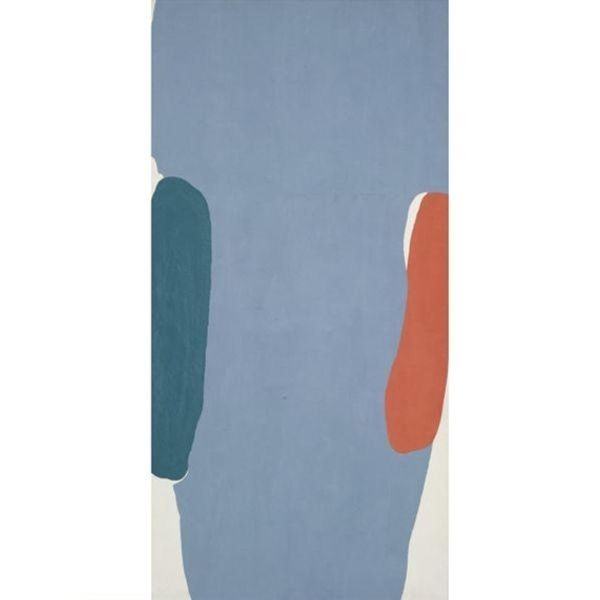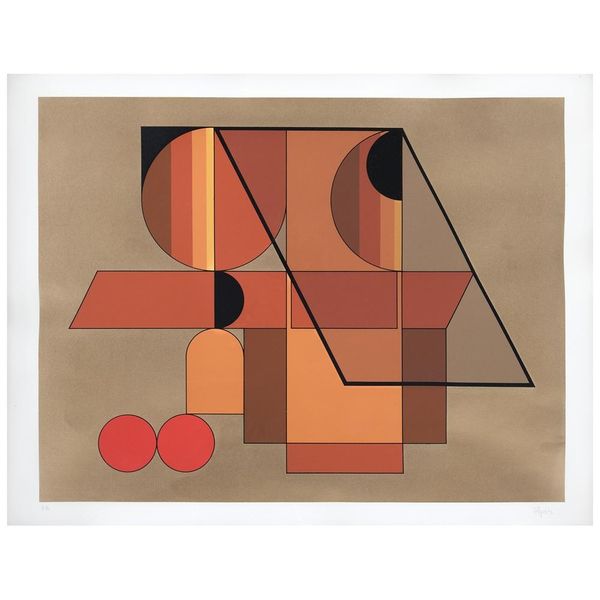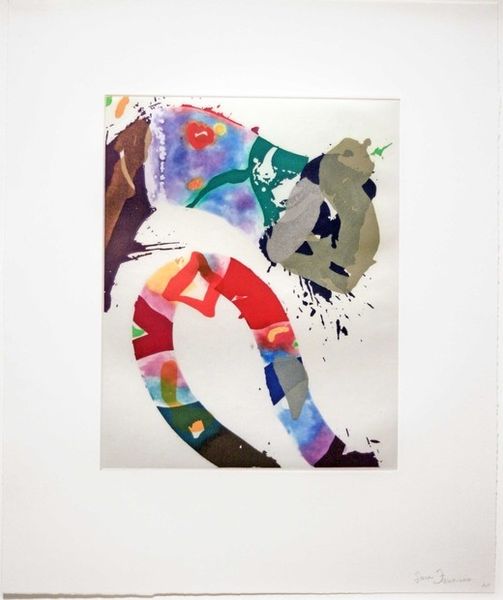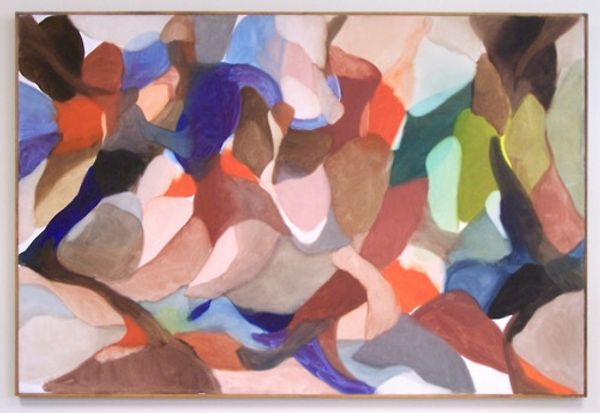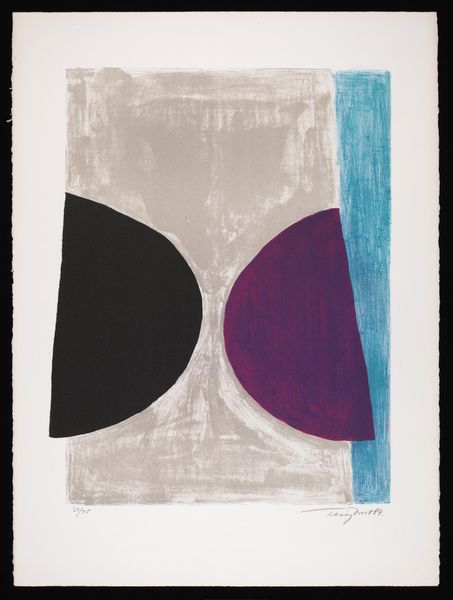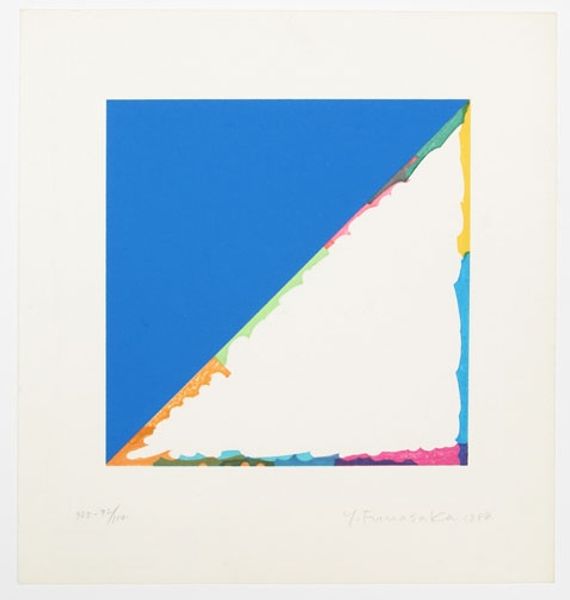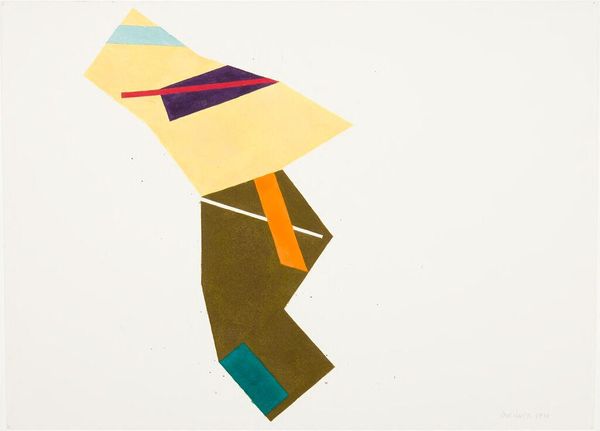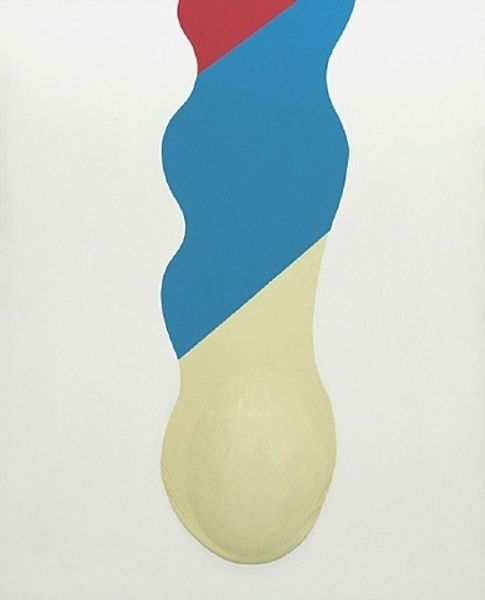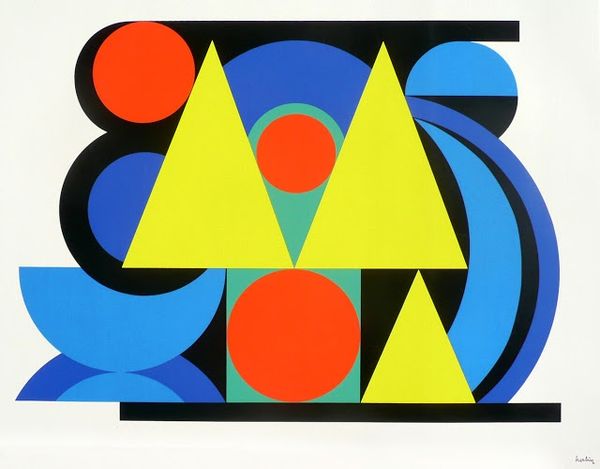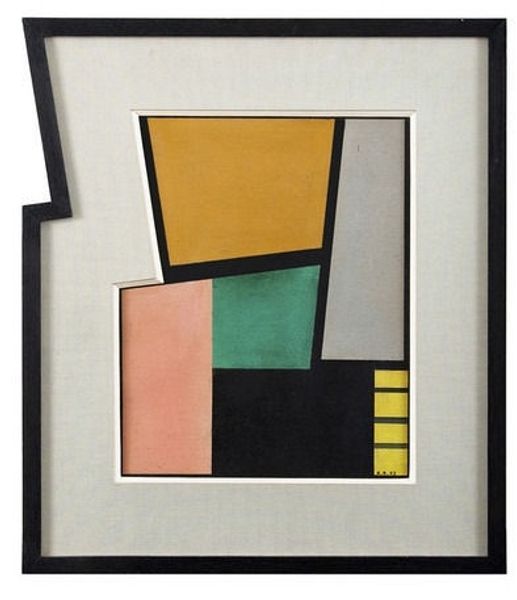
Copyright: Ray Parker,Fair Use
Ray Parker made this untitled painting using acrylic on canvas. The smooth planes of unmodulated color appear effortless, a gesture frozen in time. But consider the labor involved. Acrylic paint, a product of the mid-20th century, is itself the result of industrial chemistry, reflecting postwar advances in manufacturing and synthetic materials. The canvas, though seemingly blank, is woven from fibers, processed, stretched, and primed, each step performed by skilled workers. Parker's aesthetic relies on these processes being invisible, yet they are integral to the final composition. The hard edges and uniform surfaces depend on a controlled, almost mechanical application of paint. While Parker embraced the spontaneity associated with abstract expressionism, his emphasis on clean lines and simplified forms suggests a deliberate engagement with industrial production. So, as we look, let’s appreciate how Parker has taken the readymade materials of his time and transformed them, celebrating both the material and the idea.
Comments
No comments
Be the first to comment and join the conversation on the ultimate creative platform.


